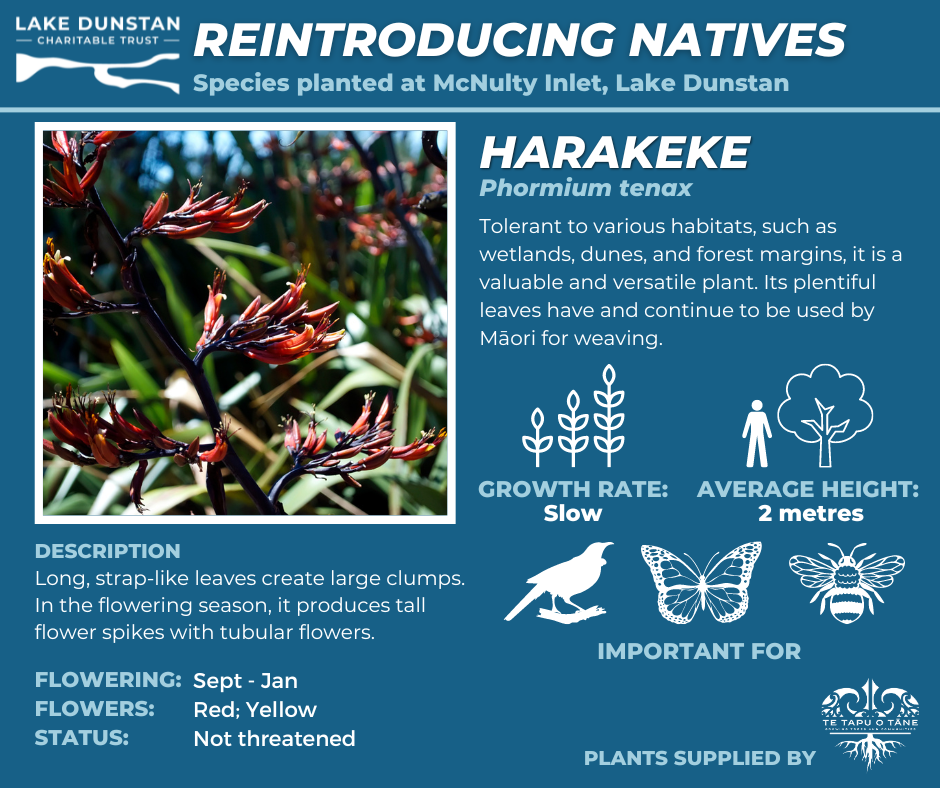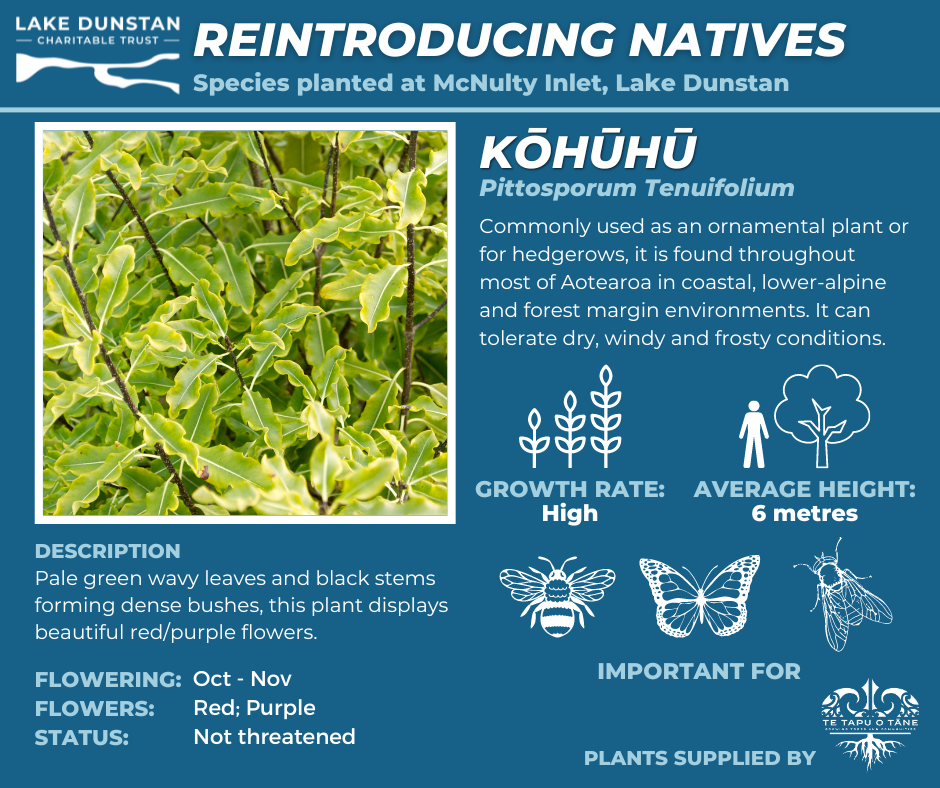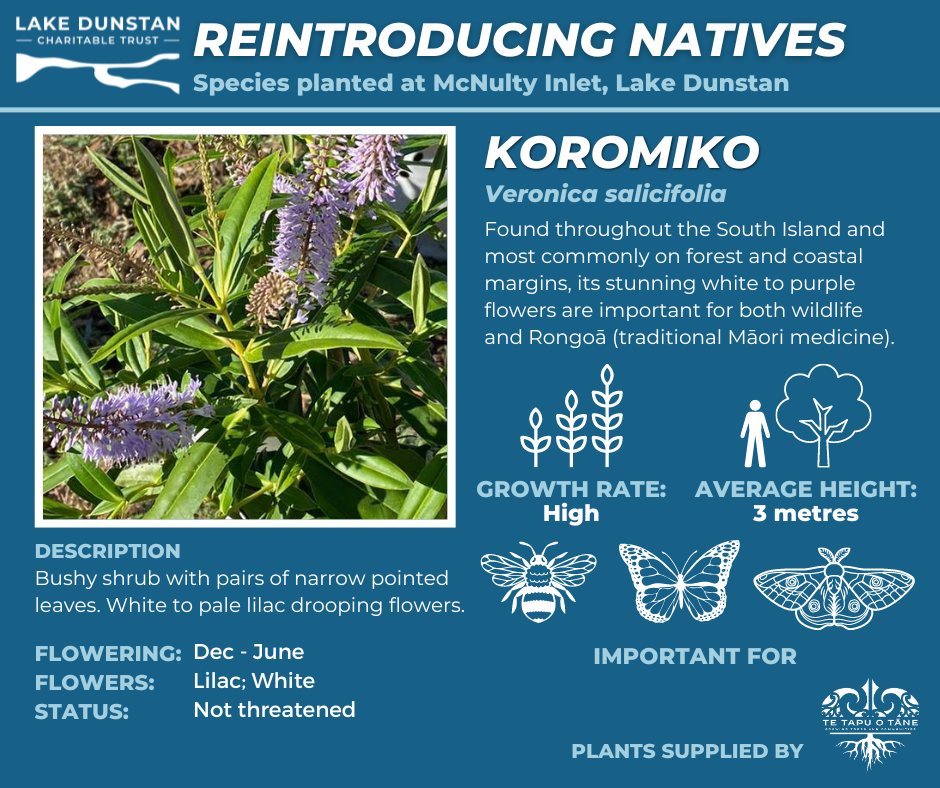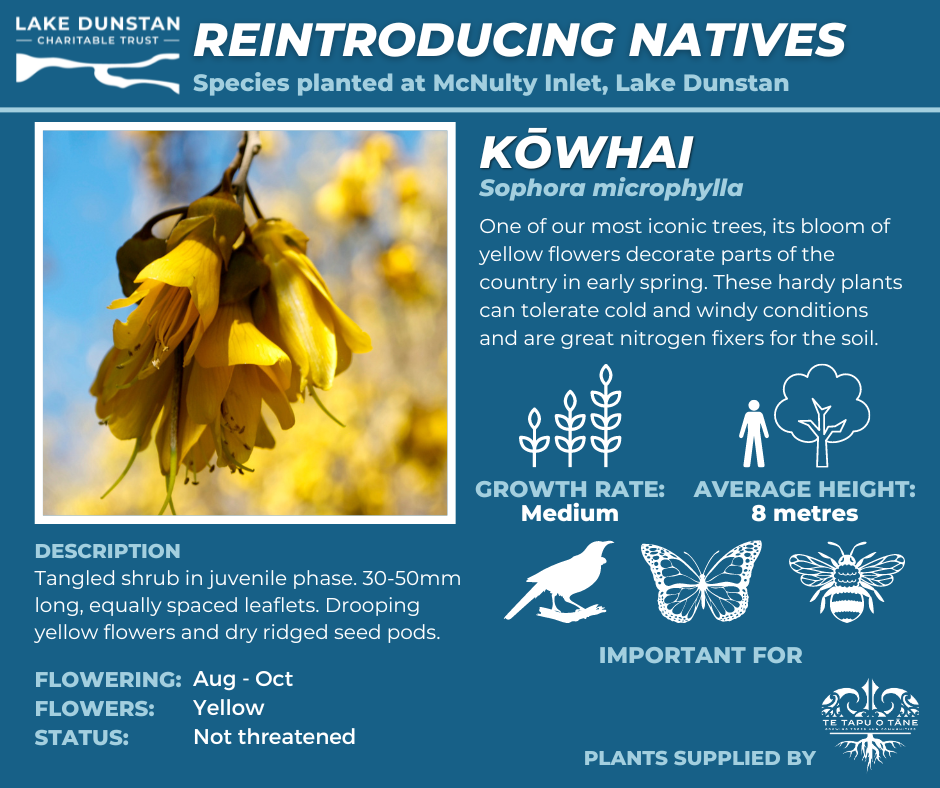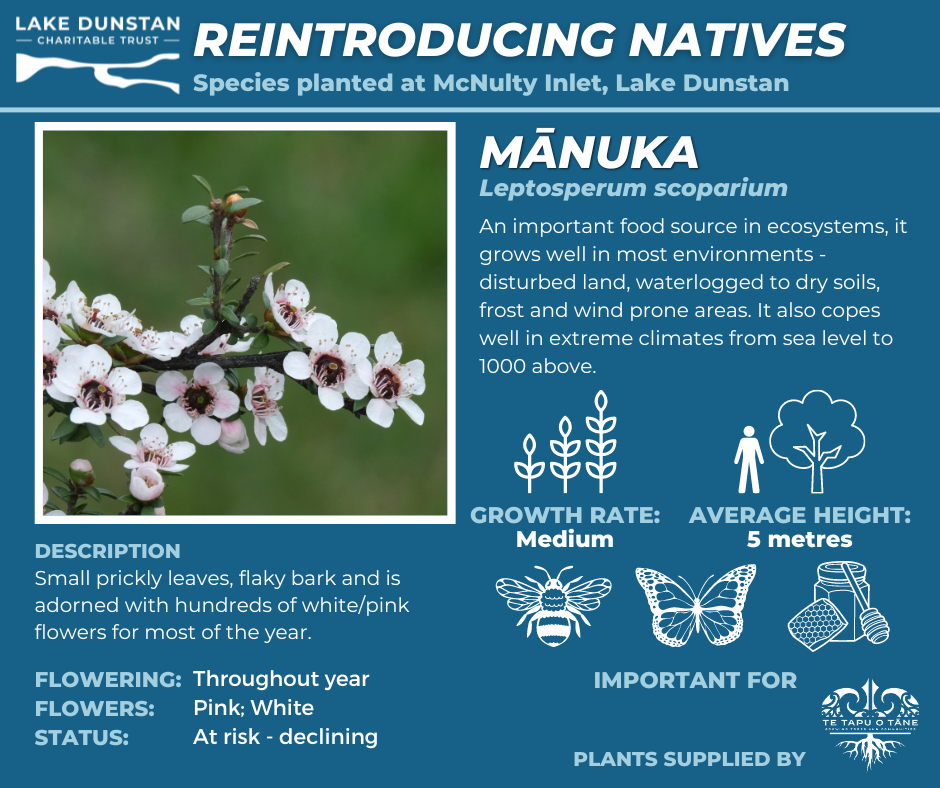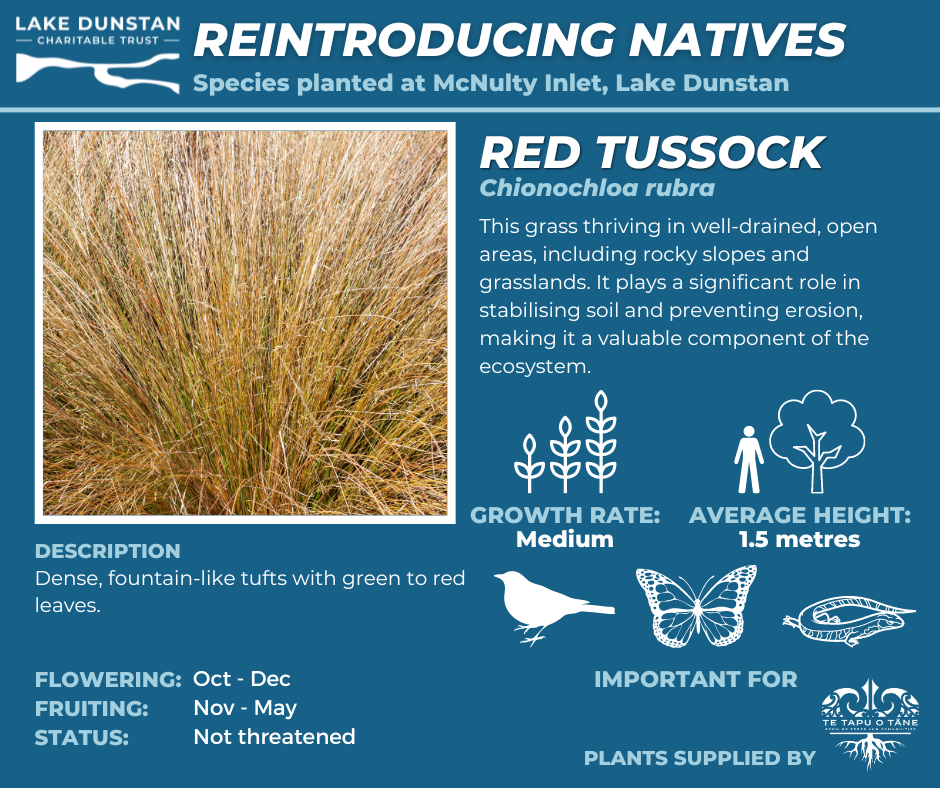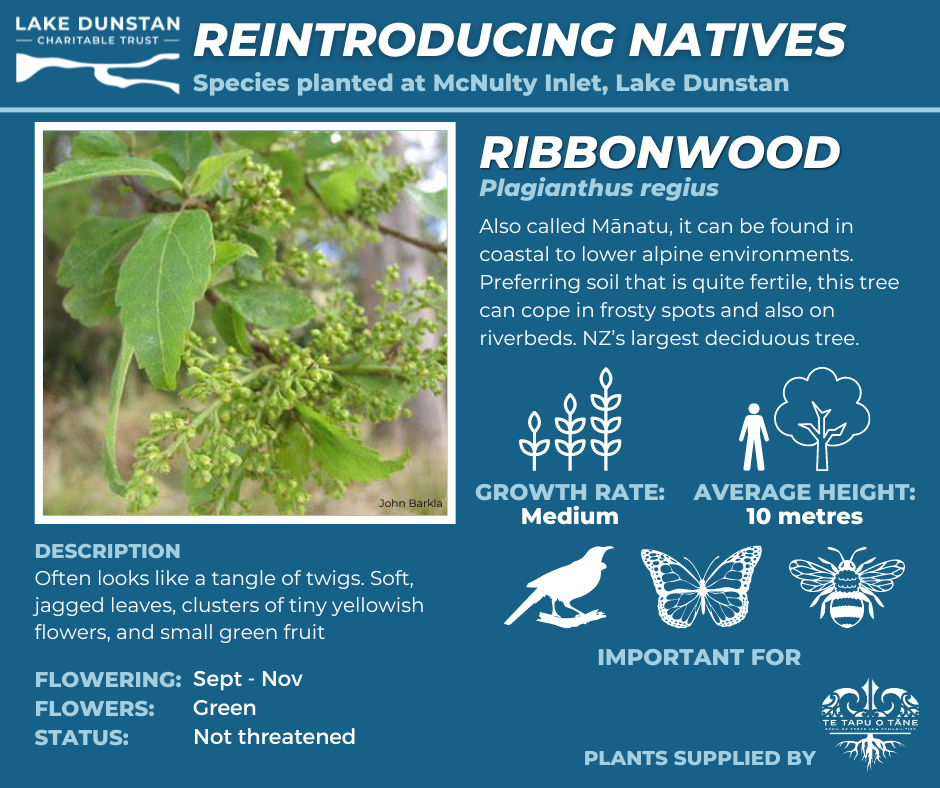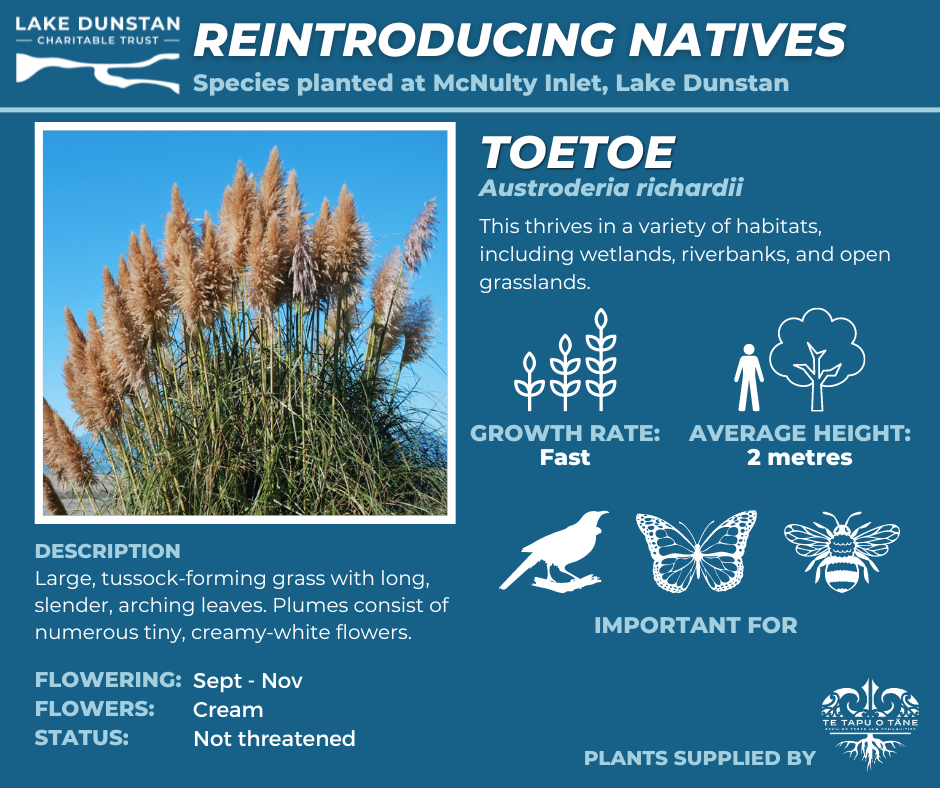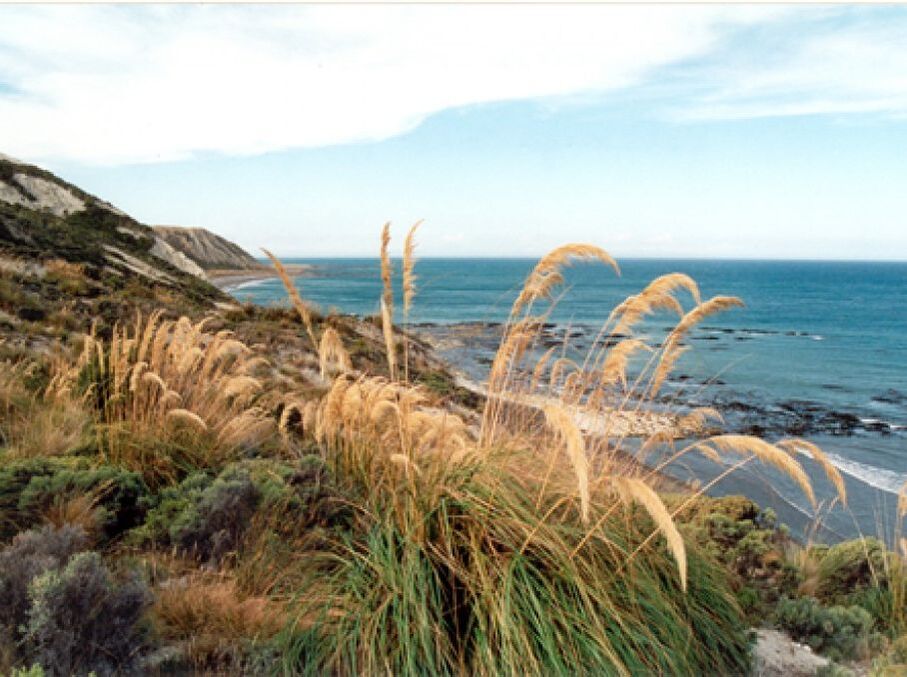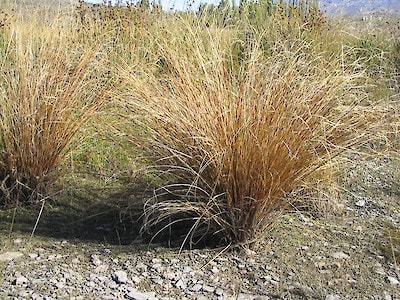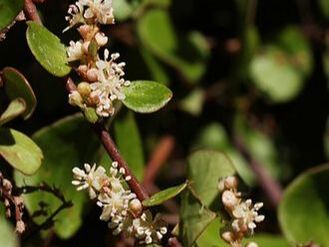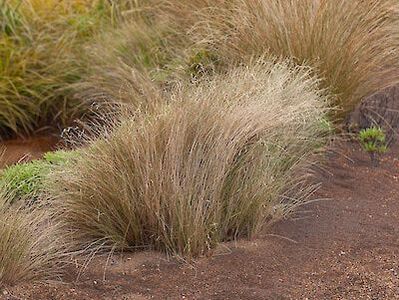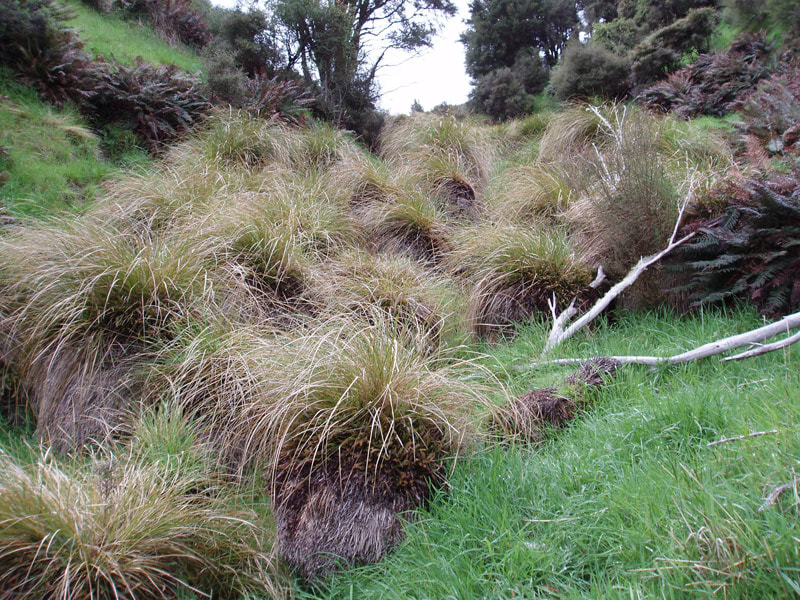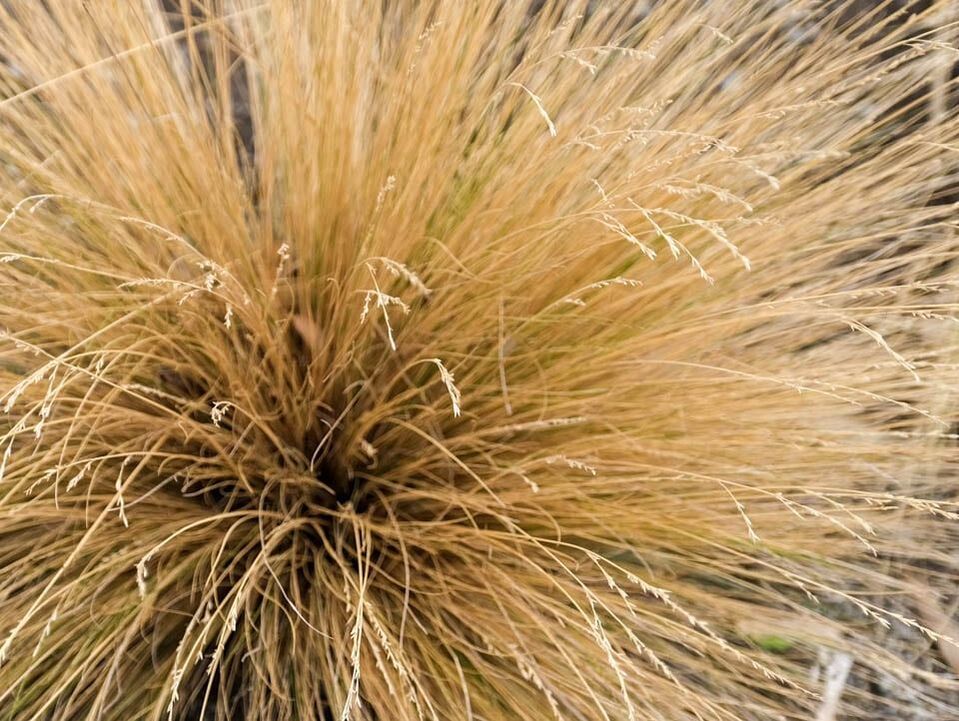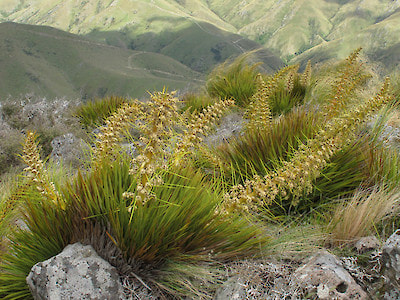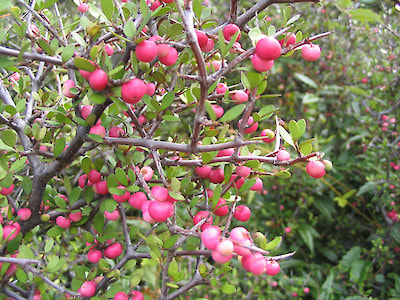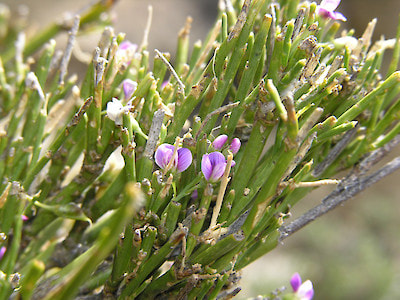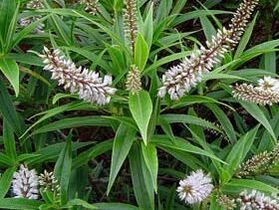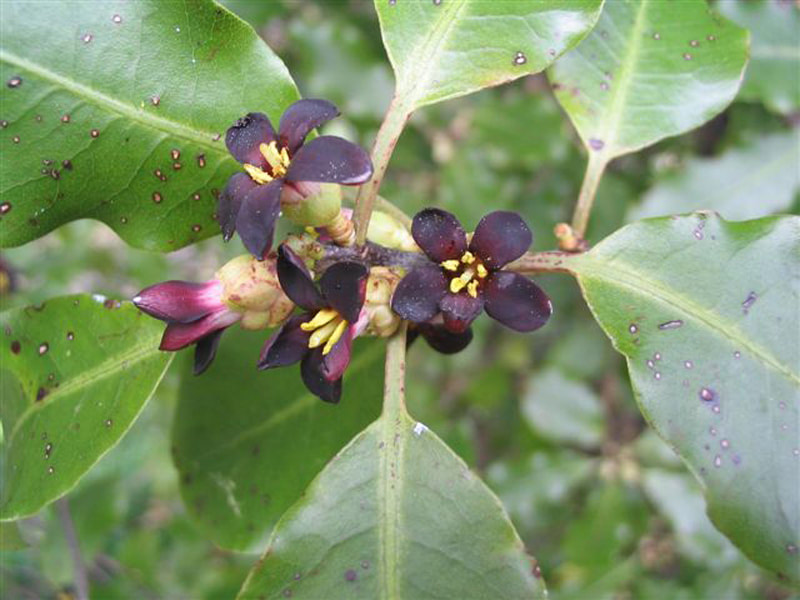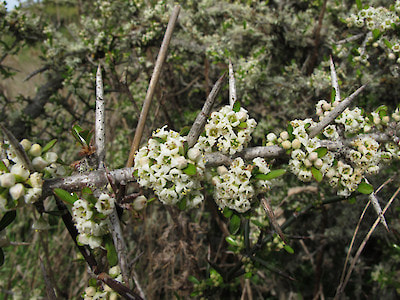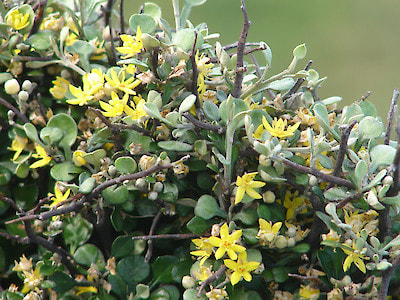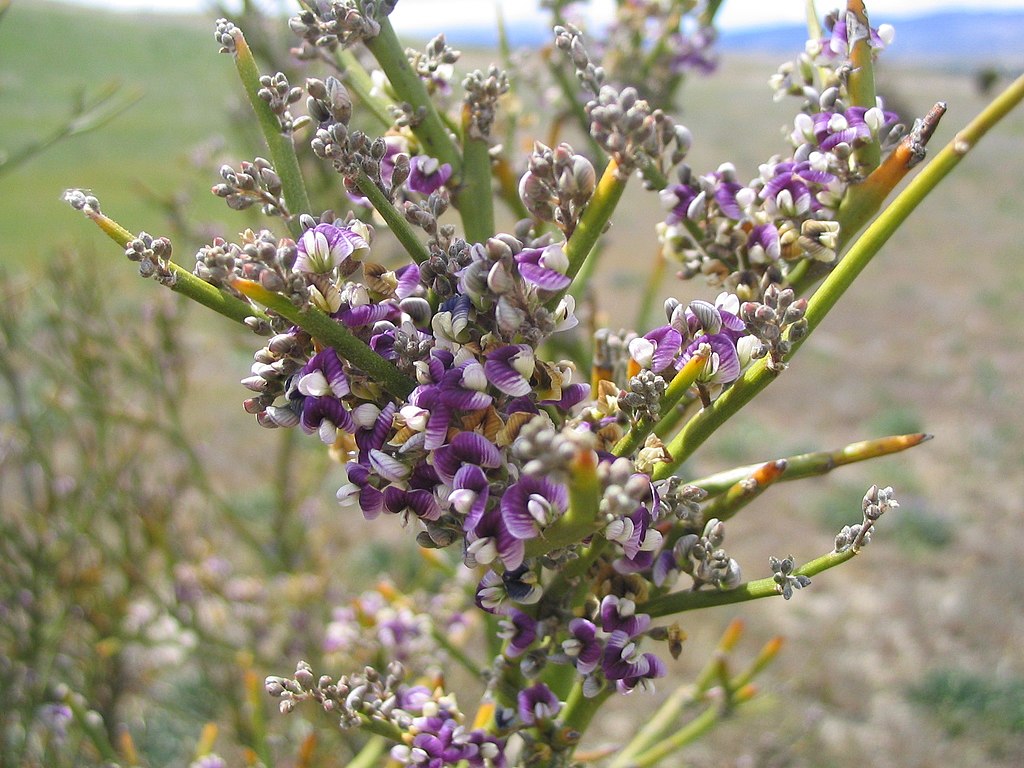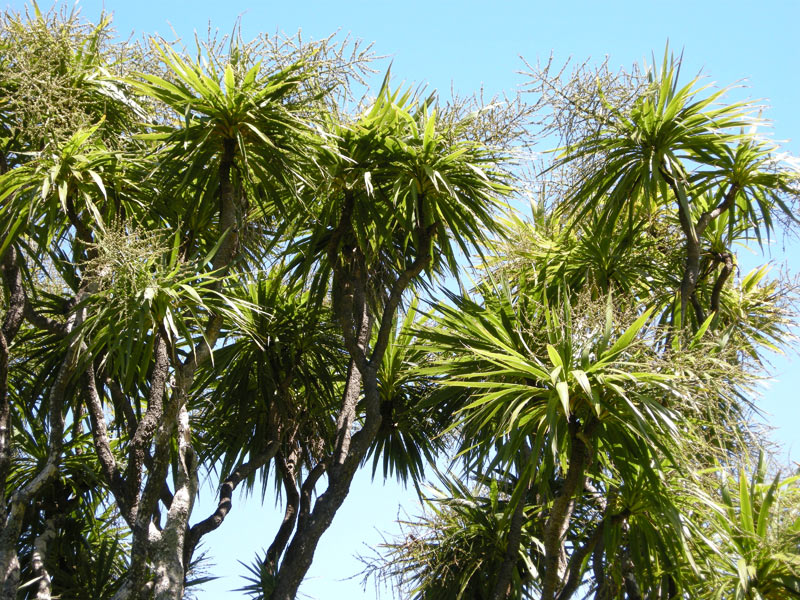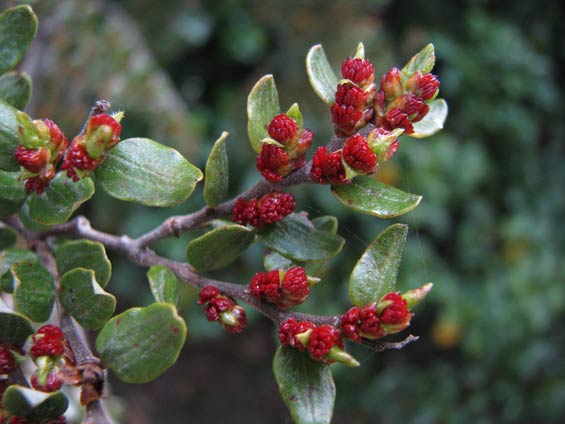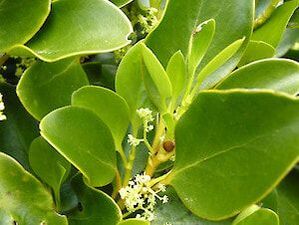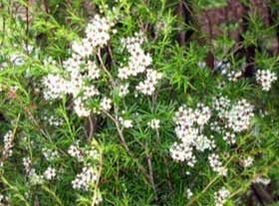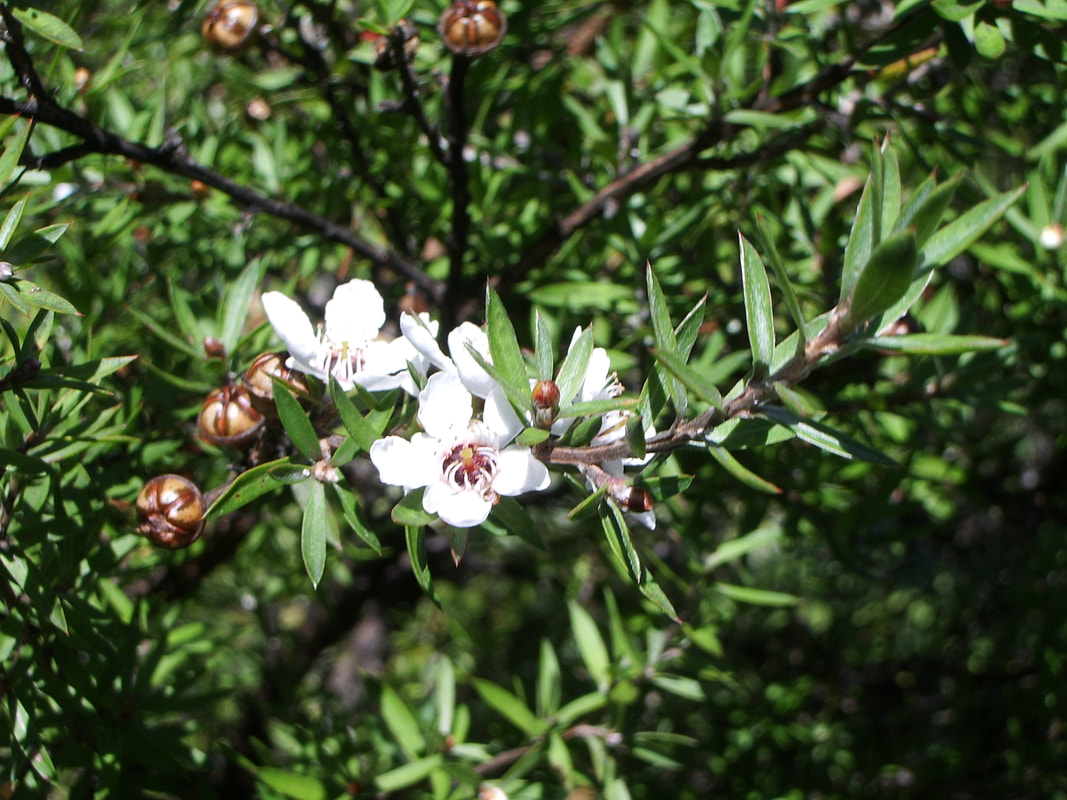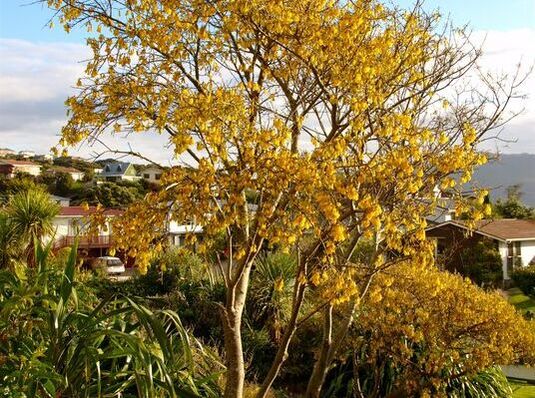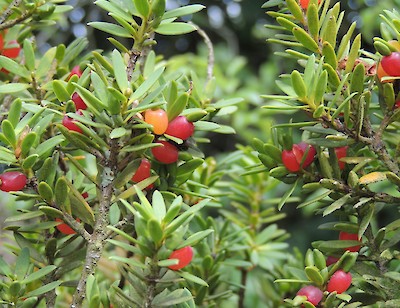New Zealand has been isolated from the rest of the world for around 60 million years meaning 80% of trees, ferns and flowing plants are only found in New Zealand (endemic). However, since humans arrived 800 years ago, 65% of our land has been cleared and converted for human occupation and use.
Habitat loss in the region started with forest fires lit by early Māori to flush out Moa for hunting and easing travel. Forests that once cloaked the landscape were replaced with shrub and tussock grasslands as a result. The land never returned to the forest as farming and mining practices were introduced to NZ by Europeans and subsequent pests have prevented kept the land sparse of native plants. Remnants of our native local ecosystems are now forced to occupy areas humans and pests have not yet infiltrated to survive. In Cromwell, many of our endemic species now cling to the rocky gullies and steep slopes of the region to avoid the grazing activity of pests and farming practices.
Our reforestation project is focused on restoring pockets of shoreline along Lake Dunstan to one that is healthy and occupied by native species. We will work to remove introduced pest species such as willow, lupins and gorse and promote the growth of endemic and locally found plants from the region. For over 30 years, our shoreline has been at the mercy of flooding, rabbits, wind, scorching sun and low rainfall. All these factors make growth rates and success difficult as there are poor nutrient and irrigation properties along the shoreline. To overcome this, restoration must be done at the right pace with much patience.
Habitat loss in the region started with forest fires lit by early Māori to flush out Moa for hunting and easing travel. Forests that once cloaked the landscape were replaced with shrub and tussock grasslands as a result. The land never returned to the forest as farming and mining practices were introduced to NZ by Europeans and subsequent pests have prevented kept the land sparse of native plants. Remnants of our native local ecosystems are now forced to occupy areas humans and pests have not yet infiltrated to survive. In Cromwell, many of our endemic species now cling to the rocky gullies and steep slopes of the region to avoid the grazing activity of pests and farming practices.
Our reforestation project is focused on restoring pockets of shoreline along Lake Dunstan to one that is healthy and occupied by native species. We will work to remove introduced pest species such as willow, lupins and gorse and promote the growth of endemic and locally found plants from the region. For over 30 years, our shoreline has been at the mercy of flooding, rabbits, wind, scorching sun and low rainfall. All these factors make growth rates and success difficult as there are poor nutrient and irrigation properties along the shoreline. To overcome this, restoration must be done at the right pace with much patience.
Species at McNulty Inlet
Species found in Central Otago
Below are some of the species that can be found and also cope with the Central Otago climate. Some of these are already in some of our planting sites and we hope to install more in time as the natural succession of the habitat transforms from barren soil to shrubland or event forest!
Low shrubs
|
Toetoe
Austroderia richardii Status: Not Threatened Distribution: South island; uncommon in North island Habitat: Coastal to subalpine; common on riverbanks and other wet places Threats: None Use: Lining walls/roofs; hunting tools |
Cutty Grass
Carex buchananii Status: At risk - declining Distribution: Common South island; uncommon in North island Habitat: Coastal to montane; beaches, riverbanks, damp open forests & tussock grasslands Threats: habitat loss; grazing pests |
Small-leaved pohuehue
muehlenbeckia complexa Status: Not threatened Distribution: N,S & Stewart Island Habitat: Coastal, lowland & montane Threats: Possums-grazing Use: Edible berries |
Silver Tussock
Poa cita Status: Not threatened Distribution: North & South island Habitat: Grasslands - lowland to montane Threats: Grazing; Fires Use: Medicine; rain cape; pants; sleeping mats |
|
Pūrei
Carex secta Status: Not threatened Distribution: N,S & Stewart Island Habitat: Common in wetlands in coastal and montane areas Threats: None |
Hard Tussock
Festuca novae-zealandiae Status: Not threatened Distribution: Common on grasslands in Canterbury & Otago Habitat: Tolerates poor soil and dry conditions Threats: Grazing; Fires |
Blue Wheat Grass
Anthosachne aprica Status: At risk - uncommon Distribution: Central Otago Habitat: Inland basin - tussock grasslands at 150-200m Threats: locally endemic; habitat loss |
Taramea
Aciphylla aurea Status: Not threatened Distribution: South island Habitat: Montane to low alpine (300-1500m); well-drained or arid soil Threats: None Use: food; sandals |
Medium shrubs
|
Makomako
Aristotelia fruticosa Status: Not threatened Distribution: N, S & Stewart island Habitat: Lowland to subalpine forest & shrublands Threat: None Use: Medicine, food, dye |
Cromwell Broom
Carmichaelia compacta Status: At risk - Uncommon Distribution: Central Otago Habitat: rocky slopes/outcrops; best in sunny well-drained areas Threat: Endemic to area; grazing |
Koromiko
Veronica salicifolia Status: Not threatened Distribution: S & Stewart island Habitat: coastal to montane; Threat: None Use: Medicine - stomach issues; ulcers; wounds |
Kohukohu
Pittosporum tenuifolium Status: Not threatened Distribution: N,S & Stewart island Habitat: Coastal to montane shrubland & forests Threat: None Uses: Medical - masticatory |
|
Mingimingi
Coprosma propinqua Status: Not threatened Distribution: N,S & Stewart island Habitat: forests; shrubland; water edge; rocky areas Threat: None Use: Medicine - baldness; headaches; influenza |
Matagouri
Discaria toumatou Status: At risk- declining Distribution: S island; uncommon in N island Habitat: short tussock grasslands; riverbanks; sand dunes; copes well in nutrient-poor soil Threat: possums; farming- clearing/maintaining pastures Use: tattoo needles |
Korokio
Corokia cotoneaster Status: Not threatened Distribution: N & S island Habitat: Common in stony & dry areas; can tolerate poor, dry soils and exposure Threat: None Use: fish hooks; medical -surgical knives, stomach issues |
Desert Broom
carmichaelia petriei Status: At risk - declining Distribution: S & Stewart island Habitat: Coastal to montane; rocky/steep grass & tussock grasslands Threat: habitat loss & modification |
Large scrubs and trees
|
Tī Kōuka
Cordyline australis Status: Not threatened Distribution: N,S & Stewart island Habitat: Coastal to montane; copes well in most conditions Threat: Disease - Sudden decline Use: Food; fishing line; mats; baskets; sandals; medicine - tonic, wounds, stomach issues, colic |
Mountain Beech
fuscospora cliffortioides Status: Not threatened Distribution: N & S island Habitat: Montane and subalpine Threat: Grazing pests; habitat loss; fire Use: Timber |
Pāpāuma
Griselinia littoralis Status: Not threatened Distribution: N, S & Stewart island Habitat: Coastal to montane; tolerates wind, cold temps & poor nutrient soil. Threat: Grazing pests Use: Medicine - skin infection |
Horoeka
Pseudopanax ferox Status: At risk - uncommon Distribution: N & S island Habitat: Coastal to subalpine: prefers drier conditions Threat: Grazing pests Use: spears; paintbrushes |
|
Kānuka
Kunzea ericoides Status: Threatened - vulnerable Distribution: S island Habitat: Coastal to montane; shrublands; forests Threat: farm clearing; firewood Use: Agricultural tools; weapons; insulation; fuel; medicine - mouthwash, stomach & eye complaints |
Mānuka
Leptospermum scoparium Status: At risk - declining Distribution: NZ & AUS Habitat: Coastal to low alpine Threat: Farm clearing; myrtle rust Use: Tea; medicine - skin complaints, mouthwash |
Kōwhai
Sophora microphylla Status: Threatened Distribution: N & S island Habitat: riverbanks; cliffs; shrubland Threat: Habitat loss Use: Building; snares; dye; medicine - bad back, wounds, bites, muscle pain |
Tōtara-kiri-kōtukutuku
Podocarpus laetus Status: Not threatened Distribution: N,S & Stewart island Habitat: lowland, subalpine & montane; copes well in nutrient and irrigation poor soil Threat: habitat loss Use: Food storage |
References
Click on images for links to photo and information source
Maori use of plant information: https://maoriplantuse.landcareresearch.co.nz/WebForms/default.aspx
https://en.wikipedia.org/wiki/Griselinia_littoralis
https://www.nzpcn.org.nz/
https://www.tanestrees.org.nz/species-profiles/kanuka/
https://www.tepapa.govt.nz/discover-collections/read-watch-play/maori/maori-medicine
https://maoriplantuse.landcareresearch.co.nz/WebForms/PeoplePlantsDetails.aspx?PKey=a6dab0c5-c7b2-4fb9-afe1-c9ca94bb4426
http://www.environmentguide.org.nz/issues/biodiversity/key-threats/habitat-loss/
https://www.jstor.org/stable/26775037
Click on images for links to photo and information source
Maori use of plant information: https://maoriplantuse.landcareresearch.co.nz/WebForms/default.aspx
https://en.wikipedia.org/wiki/Griselinia_littoralis
https://www.nzpcn.org.nz/
https://www.tanestrees.org.nz/species-profiles/kanuka/
https://www.tepapa.govt.nz/discover-collections/read-watch-play/maori/maori-medicine
https://maoriplantuse.landcareresearch.co.nz/WebForms/PeoplePlantsDetails.aspx?PKey=a6dab0c5-c7b2-4fb9-afe1-c9ca94bb4426
http://www.environmentguide.org.nz/issues/biodiversity/key-threats/habitat-loss/
https://www.jstor.org/stable/26775037

